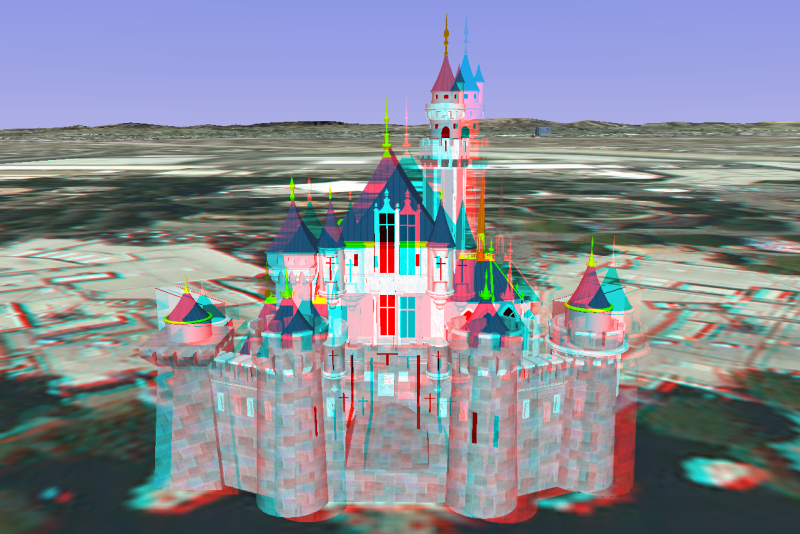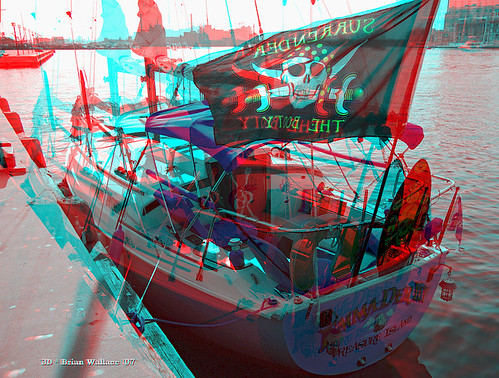Cameron expressed interest in the famous sinking of the ship RMS Titanic. He decided to script and film his next project based on this event. The picture revolved around a fictional romance story between two young lovers from different social classes who meet on board. Before production began, he took dives to the bottom of the Atlantic and shot actual footage of the ship underwater, which he inserted into the final film. Much of the film's dialogue was also written during these dives.
Subsequently, Cameron cast Leonardo DiCaprio, Kate Winslet, Billy Zane, Kathy Bates, Frances Fisher, Gloria Stuart, Bernard Hill, Jonathan Hyde, Victor Garber, Danny Nucci,David Warner, Suzy Amis, and Bill Paxton as the film's principal cast. Cameron's budget for the film reached about $200 million, making it the most expensive movie ever made at the time. Before its release, the film was widely ridiculed for its expense and protracted production schedule.
Released to theaters on December 19, 1997, Titanic grossed less in its first weekend ($28.6 million) than in its second ($35.4 million), an increase of 23.8%. This is unheard of for a widely released film, which is a testament to the movie's appeal. This was especially noteworthy, considering that the film's running time of more than three hours limited the number of showings each theater could schedule. It held the No. 1 spot on the box-office charts for months, eventually grossing a total of $600.8 million in the United States and Canada and more than $1.84 billion worldwide. Titanic became the highest-grossing film of all time, both worldwide and in the United States and Canada, and was also the first film to gross more than $1 billion worldwide. It remained the highest-grossing film since 1998, until Cameron's 2009 film Avatar surpassed its gross in 2010.[36]
The CG visuals surrounding the sinking and destruction of the ship were considered spectacular.[37] Despite criticism during production of the film, it received a record-tying 14 Oscar nominations (tied with All About Eve) at the 1998 Academy Awards. It won 11 Oscars (also tying the record for most Oscar wins with Ben-Hur and later The Lord of the Rings: The Return of the King), including: Best Picture, Best Director, Best Art Direction, Best Cinematography, Best Visual Effects, Best Film Editing, Best Costume Design, Best Sound, Best Sound Effects Editing, Best Original Dramatic Score, Best Original Song.[38] Upon receiving the Best Director Oscar, Cameron exclaimed, "I'm king of the world!", in reference to one of the main characters' lines from the film. After receiving the Best Picture Oscar along with Jon Landau, Cameron asked for a moment of silence for the 1,500 men, women, and children who died when the ship sank.
In March 2010, Cameron revealed that Titanic would be re-released in 3D in April 2012, to commemorate the 100th anniversary of the sinking of the real ship.[39] On March 27, 2012, Cameron attended the world première with Kate Winslet at the Royal Albert Hall in London.[40] Following the re-release, Titanic's domestic total was pushed to $658.6 million and more than $2.18 billion worldwide. It became the second film to gross more than $2 billion worldwide (the first being Avatar).
Spider-Man and Dark Angel (2000–2002)[edit]
Main articles: Spider-Man in film and Dark Angel (TV series)
Cameron had initially next planned to do a film of the comic-book character Spider-Man, a project developed by Menahem Golan of Cannon Films. Columbia hired David Koeppto adapt Cameron's treatment into a screenplay, and Koepp's first draft is taken often word-for-word from Cameron's story,[41] though later drafts were heavily rewritten by Koepp himself, Scott Rosenberg, and Alvin Sargent. Columbia preferred to credit David Koepp solely, and none of the scripts before or after his were ever examined by the Writers Guild of America, East to determine proper credit attribution.[citation needed] Cameron and other writers objected, but Columbia and the WGA prevailed. In its release in 2002, Spider-Manhad its screenplay credited solely to Koepp.[42]
Unable to make Spider-Man, Cameron moved to television and created Dark Angel, a superheroine-centered series influenced by cyberpunk, biopunk, contemporary superhero franchises, and third-wave feminism. Co-produced with Charles H. Eglee, Dark Angel starred Jessica Alba as Max Guevara, a genetically enhanced super-soldier created by a secretive organization. Cameron's work was said to "bring empowered female warriors back to television screens[...] by mixing the sober feminism of his The Terminator andAliens characters with the sexed-up Girl Power of a Britney Spears concert."[43] While a success in its first season, low ratings in the second led to its cancellation. Cameron himself directed the series finale, a two-hour episode wrapping up many of the series' loose ends.
In 1998 James and John David Cameron formed a digital media company, earthship.tv, which became Earthship Productions.[44] The company produced live multimedia documentaries from the depths of the Atlantic and Pacific oceans. With Earthship Productions, John Cameron's recent projects have included undersea documentaries on the Bismarck (Expedition: Bismarck, 2002) and the Titanic (Ghosts of the Abyss (2003, in IMAX 3D) and Tony Robinson's Titanic Adventure (2005)).[45] He was a producer on the 2002 film Solaris, and narrated The Exodus Decoded.
Cameron is an advocate for stereoscopic digital 3-D films. In a 2003 interview about his IMAX 2D documentary Ghosts of the Abyss, he mentioned that he is "going to do everything in 3D now".[46] He has made similar statements in other interviews. Ghosts of the Abyss andAliens of the Deep (also an IMAX documentary) were both shot in 3-D and released by Walt Disney Pictures and Walden Media, and Cameron did the same for his new project, Avatar for 20th Century Fox & Sony Pictures' Columbia Pictures. He intends to use the same technology for The Dive, Sanctum and an adaptation of the manga series Battle Angel Alita.
Cameron was the founder and CEO of Digital Domain, a visual-effects production and technology company.
In addition, he plans to create a 3-D project about the first trip to Mars. ("I've been very interested in the Humans to Mars movement—the 'Mars Underground'—and I've done a tremendous amount of personal research for a novel, a miniseries, and a 3-D film.")[47] He is on the science team for the 2011 Mars Science Laboratory.[48]
Cameron announced on February 26, 2007, that he, along with his director, Simcha Jacobovici, have documented the unearthing of the Talpiot Tomb, which is alleged to be the tomb of Jesus. Unearthed in 1981 by Israeli construction workers, the names on the tomb are claimed, in the documentary, to correlate with the names of Jesus and several individuals closely associated with him. The documentary, named The Lost Tomb of Jesus, was broadcast on the Discovery Channel on March 4, 2007.
As a National Geographic explorer-in-residence,[49] Cameron re-investigated the sinking of the Titanic with eight experts in 2012. The investigation was featured in the TV documentary special Titanic: The Final Word with James Cameron, which premiered on April 8 on the National Geographic Channel.[50] In the conclusion of the analysis, the consensus revised the CGI animation of the sinking conceived in 1995.
Cameron expressed interest in the famous sinking of the ship RMS Titanic. He decided to script and film his next project based on this event. The picture revolved around a fictional romance story between two young lovers from different social classes who meet on board. Before production began, he took dives to the bottom of the Atlantic and shot actual footage of the ship underwater, which he inserted into the final film. Much of the film's dialogue was also written during these dives.
Subsequently, Cameron cast Leonardo DiCaprio, Kate Winslet, Billy Zane, Kathy Bates, Frances Fisher, Gloria Stuart, Bernard Hill, Jonathan Hyde, Victor Garber, Danny Nucci,David Warner, Suzy Amis, and Bill Paxton as the film's principal cast. Cameron's budget for the film reached about $200 million, making it the most expensive movie ever made at the time. Before its release, the film was widely ridiculed for its expense and protracted production schedule.
Released to theaters on December 19, 1997, Titanic grossed less in its first weekend ($28.6 million) than in its second ($35.4 million), an increase of 23.8%. This is unheard of for a widely released film, which is a testament to the movie's appeal. This was especially noteworthy, considering that the film's running time of more than three hours limited the number of showings each theater could schedule. It held the No. 1 spot on the box-office charts for months, eventually grossing a total of $600.8 million in the United States and Canada and more than $1.84 billion worldwide. Titanic became the highest-grossing film of all time, both worldwide and in the United States and Canada, and was also the first film to gross more than $1 billion worldwide. It remained the highest-grossing film since 1998, until Cameron's 2009 film Avatar surpassed its gross in 2010.[36]
The CG visuals surrounding the sinking and destruction of the ship were considered spectacular.[37] Despite criticism during production of the film, it received a record-tying 14 Oscar nominations (tied with All About Eve) at the 1998 Academy Awards. It won 11 Oscars (also tying the record for most Oscar wins with Ben-Hur and later The Lord of the Rings: The Return of the King), including: Best Picture, Best Director, Best Art Direction, Best Cinematography, Best Visual Effects, Best Film Editing, Best Costume Design, Best Sound, Best Sound Effects Editing, Best Original Dramatic Score, Best Original Song.[38] Upon receiving the Best Director Oscar, Cameron exclaimed, "I'm king of the world!", in reference to one of the main characters' lines from the film. After receiving the Best Picture Oscar along with Jon Landau, Cameron asked for a moment of silence for the 1,500 men, women, and children who died when the ship sank.
In March 2010, Cameron revealed that Titanic would be re-released in 3D in April 2012, to commemorate the 100th anniversary of the sinking of the real ship.[39] On March 27, 2012, Cameron attended the world première with Kate Winslet at the Royal Albert Hall in London.[40] Following the re-release, Titanic's domestic total was pushed to $658.6 million and more than $2.18 billion worldwide. It became the second film to gross more than $2 billion worldwide (the first being Avatar).
Spider-Man and Dark Angel (2000–2002)[edit]
Main articles: Spider-Man in film and Dark Angel (TV series)
Cameron had initially next planned to do a film of the comic-book character Spider-Man, a project developed by Menahem Golan of Cannon Films. Columbia hired David Koeppto adapt Cameron's treatment into a screenplay, and Koepp's first draft is taken often word-for-word from Cameron's story,[41] though later drafts were heavily rewritten by Koepp himself, Scott Rosenberg, and Alvin Sargent. Columbia preferred to credit David Koepp solely, and none of the scripts before or after his were ever examined by the Writers Guild of America, East to determine proper credit attribution.[citation needed] Cameron and other writers objected, but Columbia and the WGA prevailed. In its release in 2002, Spider-Manhad its screenplay credited solely to Koepp.[42]
Unable to make Spider-Man, Cameron moved to television and created Dark Angel, a superheroine-centered series influenced by cyberpunk, biopunk, contemporary superhero franchises, and third-wave feminism. Co-produced with Charles H. Eglee, Dark Angel starred Jessica Alba as Max Guevara, a genetically enhanced super-soldier created by a secretive organization. Cameron's work was said to "bring empowered female warriors back to television screens[...] by mixing the sober feminism of his The Terminator andAliens characters with the sexed-up Girl Power of a Britney Spears concert."[43] While a success in its first season, low ratings in the second led to its cancellation. Cameron himself directed the series finale, a two-hour episode wrapping up many of the series' loose ends.
In 1998 James and John David Cameron formed a digital media company, earthship.tv, which became Earthship Productions.[44] The company produced live multimedia documentaries from the depths of the Atlantic and Pacific oceans. With Earthship Productions, John Cameron's recent projects have included undersea documentaries on the Bismarck (Expedition: Bismarck, 2002) and the Titanic (Ghosts of the Abyss (2003, in IMAX 3D) and Tony Robinson's Titanic Adventure (2005)).[45] He was a producer on the 2002 film Solaris, and narrated The Exodus Decoded.
Cameron is an advocate for stereoscopic digital 3-D films. In a 2003 interview about his IMAX 2D documentary Ghosts of the Abyss, he mentioned that he is "going to do everything in 3D now".[46] He has made similar statements in other interviews. Ghosts of the Abyss andAliens of the Deep (also an IMAX documentary) were both shot in 3-D and released by Walt Disney Pictures and Walden Media, and Cameron did the same for his new project, Avatar for 20th Century Fox & Sony Pictures' Columbia Pictures. He intends to use the same technology for The Dive, Sanctum and an adaptation of the manga series Battle Angel Alita.
Cameron was the founder and CEO of Digital Domain, a visual-effects production and technology company.
In addition, he plans to create a 3-D project about the first trip to Mars. ("I've been very interested in the Humans to Mars movement—the 'Mars Underground'—and I've done a tremendous amount of personal research for a novel, a miniseries, and a 3-D film.")[47] He is on the science team for the 2011 Mars Science Laboratory.[48]
Cameron announced on February 26, 2007, that he, along with his director, Simcha Jacobovici, have documented the unearthing of the Talpiot Tomb, which is alleged to be the tomb of Jesus. Unearthed in 1981 by Israeli construction workers, the names on the tomb are claimed, in the documentary, to correlate with the names of Jesus and several individuals closely associated with him. The documentary, named The Lost Tomb of Jesus, was broadcast on the Discovery Channel on March 4, 2007.
As a National Geographic explorer-in-residence,[49] Cameron re-investigated the sinking of the Titanic with eight experts in 2012. The investigation was featured in the TV documentary special Titanic: The Final Word with James Cameron, which premiered on April 8 on the National Geographic Channel.[50] In the conclusion of the analysis, the consensus revised the CGI animation of the sinking conceived in 1995.







.jpg)


No comments:
Post a Comment